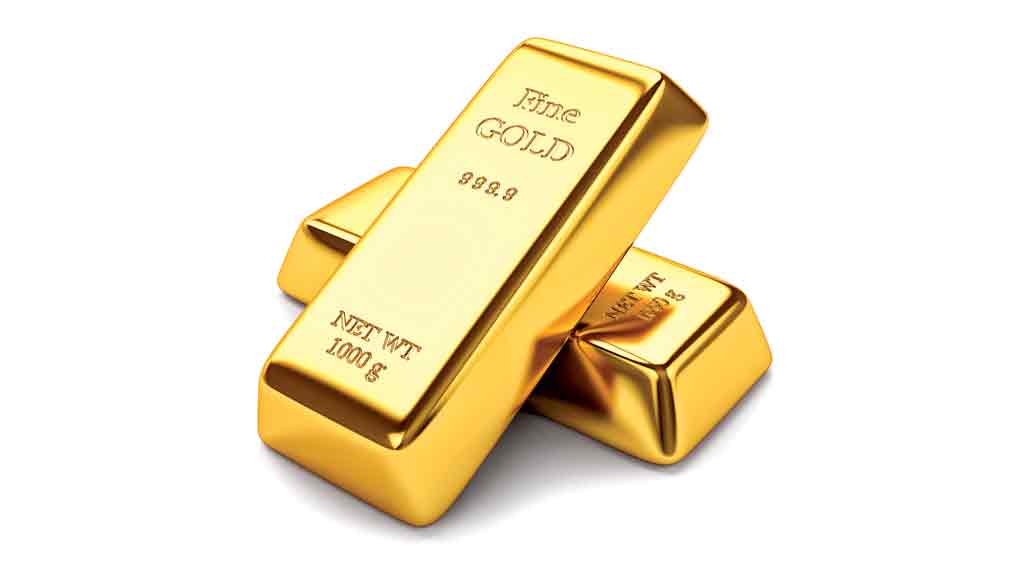The precious metal for August delivery closed up 1.01%, priced at $2,336.60 per troy ounce on the Comex, the metals division of the New York Mercantile Exchange (Nymex). This movement was triggered by the weakening of Treasury yields and the dollar abroad following a series of mixed economic data from the United States.
U.S. economic data played a crucial role in driving up gold prices. Notably, unemployment claims influenced the market. Although the weekly figure was lowered, the total number of continuing claims reached its highest level since 2021. Analysts at Pantheon noted that this weakening labor market could compel the Federal Reserve (Fed) to take action in the coming months.
The possibility of interest rate cuts by the Fed in September heightened expectations for a gold rally. Victor Arduin, an analyst for energy and macroeconomics at Hedgepoint Global Markets, stated that if rate cuts are realized, gold prices could enter a new rally, supported by the uncertain global economic environment. However, Capital Economics cautioned that the same scenario could negatively impact commodity prices, particularly for metals like gold and copper. The British consultancy predicts that prices could reverse from the second half of 2024 to 2025 as global demand decreases and economic activity in China slows.

TD Securities highlighted in a statement that the data released on Friday regarding the Personal Consumption Expenditures (PCE) price index will be crucial for gold prices. In the worst-case scenario, gold will still face resistance at $2,208 per troy ounce, supported by strong demand in the physical market, driven by purchases from central banks and investors in Asia.
The uncertain global environment has been a significant factor in the movement of gold prices. Persisting inflation and economic slowdown in various parts of the world, including China, have led investors to seek safety in the precious metal. The slowdown in economic activity in China, one of the world’s largest economies, could impact global demand for commodities and negatively affect gold prices.
Purchases of gold by central banks and investors in Asia have provided important support for prices. The increase in gold reserves at these banks continues to reflect confidence in the metal as a store of value. Additionally, Asian investors have historically shown strong demand for gold, particularly during times of economic uncertainty.
The weakening of Treasury yields and the dollar has also been a key factor in the rise of gold prices. When Treasury yields fall, the opportunity cost of holding gold, which does not yield interest, decreases, making it more attractive. Similarly, a weaker dollar makes gold, which is priced in dollars, cheaper for holders of other currencies, thereby increasing demand.
The gold market will continue to be influenced by a combination of global economic factors and monetary policy. Future forecasts suggest that the Federal Reserve’s behavior regarding interest rate cuts will be critical. If the Fed implements rate cuts, gold prices are expected to rise further. However, if global demand for commodities declines and the economic slowdown in China persists, prices could face a correction.
The closing price of gold in positive territory, due to the weakening of Treasury yields and the dollar, reflects the complexity of the global market. Expectations of interest rate cuts from the Fed, ongoing demand from central banks and Asian investors, as well as mixed economic data from the U.S., are all factors influencing the price of the precious metal. Despite the uncertain global environment, gold remains an important store of value, with forecasts indicating both potential rallies and price declines depending on global economic developments in the coming months.
While interest rate cuts may support a new gold rally, as indicated by analysts, there are concerns about the sustainability of these gains in an uncertain global economic scenario. Capital Economics’ forecast for a potential price reversal starting in the second half of 2024 highlights the market’s sensitivity to changes in economic and political conditions.
On the other hand, the persistently strong demand for gold from central banks and Asian investors provides significant support for prices, even in the face of fluctuations in the global macroeconomic environment. The influence of a weaker dollar and declining Treasury yields has been particularly relevant, making gold an attractive alternative in a low-interest-rate environment and financial market volatility.
In summary, gold continues to fulfill its traditional role as a store of value in times of economic uncertainty and geopolitical instability. Investors are attentive to the Fed’s decisions and global economic indicators that will shape its future. The price movements of gold in the coming months will be determined by the complex interaction between monetary policy, economic indicators, and market dynamics, presenting both opportunities and challenges for commodity market participants.
Gold for August closed with a 1.01% increase at $2,336.60 per troy ounce; mixed U.S. data, particularly unemployment claims, influenced the market; potential interest rate cuts by the Fed could extend the gold rally; Capital Economics forecasts a possible price reversal starting in the second half of 2024; TD Securities points out that the Personal Consumption Expenditures (PCE) price index will be crucial for gold prices; purchases by central banks and Asian investors continue to support prices; the weakening of Treasury yields and the dollar was a key factor in the rise of gold prices; the gold market is influenced by a combination of global economic factors and monetary policy, with forecasts for rallies and price declines depending on global economic developments.
For investors, the current scenario presents both risks and opportunities. Gold, historically viewed as a safe haven during times of uncertainty, could continue to attract those seeking protection from stock market volatility and inflation. Furthermore, diversifying portfolios with tangible assets like gold can provide an additional layer of security.
However, investors should remain vigilant about potential price declines mentioned by analysts, especially in the event of a global economic slowdown or significant changes in the Fed’s monetary policy. By closely monitoring macroeconomic trends and employing a diversified investment strategy, investors can better position themselves to navigate the challenges and opportunities in the gold market in the coming months.

